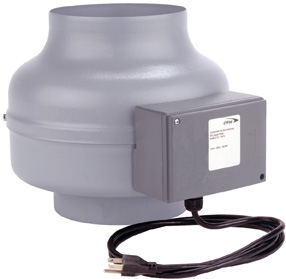
Fresh air is at the center of successful indoor gardening. Outside, air is abundant and almost always fresh. C02 levels in the air over a field of rapidly growing vegetation will vary on how still the air is. Being outdoors, and subject to the warming and cooling of the day, the wind blows in fresh air. Rain will cleanse the air of dust and pollutants.
The outdoor environment is always moving. Plants grown indoors do not have the natural balance that is present outside and must be achieved indoors by way of fresh air ventilation or CO2 enrichment.
Adding CO2 to your hydroponic systems can lead to bigger yields. Now having said that, there is a caveat – like all good things – there can be some events to watch out for. For this article, we will be dealing with the increases of humidity, or water vapor present in the air, in a CO2 enriched environment.
There are various devices used to measure and regulate humidity called psychrometers or hygrometers. You can regulate the humidity of a room with a humidistat, comparable to a thermometer and thermostat for temperature control. You can find from most retail outlets a combination hygrometer/thermometer unit; a quality wireless unit will offer ease of placement.
The humidity level should range from 40-75% when your lights are on which can be measured with a hygrometer. Now the warmer the air, the more retained water, which means humidity levels can easily go beyond the recommended 40-75%. High humidity like this coupled with lower nighttime temperatures (a requirement to get plants like orchids to bloom) can cause condensation to form on leaves. Which means your hydroponic system would be a prime candidate for all sorts of fungus issues, like powdery mildew. Inadequate ventilation is the primary cause of most fungal diseases.
How to Prevent This
Ventilation fans – both intake and outtake- help regulate temperature, CO2 levels and relative humidity. During the winter months, you’re more likely to need a ventilation fan for dehumidification rather than reducing temperature. Air is not exchanged as frequently in winter, so plants naturally raise humidity without air being exhausted. Fans at too high a setting combined with high heat can lead to lower humidity levels as well – find the balance for your hydroponic system and it will take care of itself.
Blowers
Excess heat can result in excess humidity as the air retains for water. Blowers remove heat, which accumulates rapidly in indoor growing situations by pulling air in the side of the blower and pumping it out the front. Most units have a flange on the front for mounting on a wall or inside a grow box. Some units feature a round inlet flange for connecting ducting so you can pull air from another room.
Related Articles & Free Email Newsletter
A Simple and Inexpensive Passive Hydroponics for Home Hobby Growers
Diluting Your Hydroponic Nutrient Solution May Lead to Better Yields




Comment here